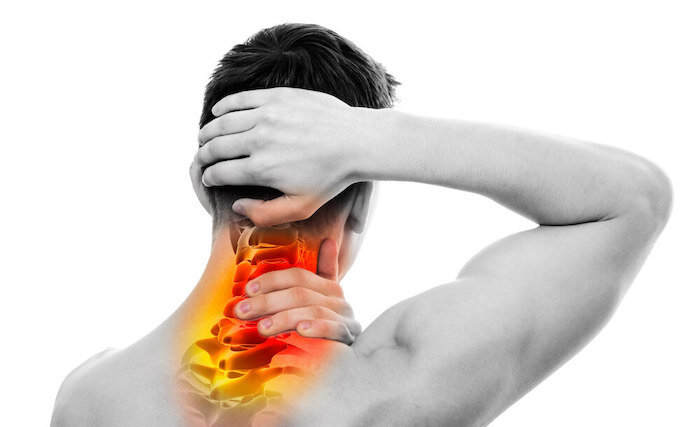
When neck arthritis strikes, it can cause painful joint inflammation and stiffness. There are various types of neck arthritis, such as the following:
- Cervical osteoarthritis involves the breakdown of the cartilage within the neck’s joints, which may occur due to wear and tear over time or maybe accelerated by an injury.
- Rheumatoid arthritis is an autoimmune disease that can cause damage to joints. When rheumatoid arthritis occurs in the cervical spine, it is most likely to occur in the upper neck or base of the skull.
- Ankylosing spondylitis is a type of arthritis that causes enthesitis, which is inflammation where the ligaments and tendons attach to bone. While ankylosing spondylitis typically starts in the hips and lower back, it can eventually work its way up to the neck in severe cases.
The focus of this blog is cervical osteoarthritis, which is the most common form of neck arthritis that is discussed on this site.
How Cervical Osteoarthritis Develops
Pairs of small facet joints run down the back of your cervical spine. Each of your facet joints is lined with cartilage. This cartilage is surrounded by a capsule filled with synovial fluid, lubricating your facet joints and enabling smooth movements between adjacent vertebrae.
Cervical facet osteoarthritis develops when your cartilage begins to degenerate or break down. As your cartilage thins and wears away, bone-on-bone friction occurs in your facet joints. This friction can create inflammation and bony overgrowths, called bone spurs (osteophytes).
Symptoms of Cervical Osteoarthritis
Neck pain from cervical osteoarthritis typically starts gradually and progresses over time. The neck may feel particularly stiff and achy in the morning and then feel better as the day goes on.
Some common symptoms of cervical osteoarthritis can include one or more of the following:
- Neck pain that typically feels dull but can also be sharp or burning
- Referred pain up to the head or down into the upper back
- Stiff neck or reduced range of motion
- Neck tenderness when touched
On occasion, bone spurs may impinge on a nerve root in your neck. This impingement can cause radicular pain in the arm, which can feel electric shock-like. If nerve root inflammation results in neurological deficits, such as numbness or weakness in the arm or hand, it is called cervical radiculopathy.
Treatment Options for Cervical Osteoarthritis
Cervical osteoarthritis can usually be successfully managed without surgery. Common treatments include:
- Rest or activity modification. Going easy on the neck during a painful flare-up may ease the pain. Also, you may need to modify some activities, such as using a different swim stroke if you enjoy swimming.
- Physical therapy. A physiatrist, physical therapist, or other medical professionals can customize a neck exercise program for you. A stronger and more flexible neck has improved function, which may reduce pain.
- Over-the-counter medications. Non-steroidal anti-inflammatory drugs (NSAIDs) may help relieve inflammation from osteoarthritis. A few examples include ibuprofen (Advil) and naproxen (Aleve). Remember to carefully read the instructions before using any medication to reduce the risk for serious complications.
- Heat and/or cold therapy. Applying ice can help reduce inflammation and numb the pain. Other people may prefer to apply heat therapy, which can increase blood flow and relax the muscles. When applying heat or cold therapy, applications should last about 15 minutes with about 2 hours of rest in between. Keep a layer between your skin and the heat/cold source.
Other treatment options are available, including therapeutic injections. In rare cases for patients with severe cervical osteoarthritis that doesn’t respond to nonsurgical treatments, cervical spinal fusion surgery may be a treatment option.
Precision Pain Care and Rehabilitation has two convenient locations in Richmond Hill – Queens and New Hyde Park – Long Island. Call the Richmond Hill office at (718) 215-1888, or (516) 419-4480 for the Long Island office, to arrange an appointment with our Interventional Pain Management Specialist, Dr. Jeffrey Chacko.













